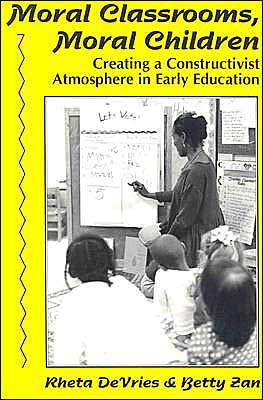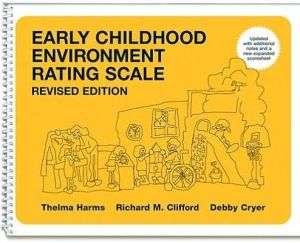Moral Classrooms, Moral Children: Creating a Constructivist Atmosphere in Early Education
Search in google:
AcknowledgmentsIntroduction11What Do We Mean by "Moral Classrooms?"7Vignettes from Three Classrooms7Sketches of the Sociomoral Atmospheres in Three Classrooms10Components of the Sociomoral Atmosphere22Research on Sociomoral Atmosphere and Children's Sociomoral Development23The Sociomoral Atmosphere as Hidden Curriculum25So What Is the Constructivist Sociomoral Atmosphere?262What Do We Mean by "Moral Children?"28What We Do Not Mean by "Moral Children"28How Children Think About Moral Rules31How Children Think About Others32Observing Moral Children in the Classroom383How the Sociomoral Atmosphere Influences the Child's Development43Social Interaction and Construction of the Self44The Teacher-Child Relationship45Peer Relationships524Establishing a Constructivist Sociomoral Atmosphere58Classroom Organization58Activities62The Teacher's Role705Conflict and Its Resolution79The Role of Conflict in Development79Sociomoral Atmosphere and Conflict Resolution81Conflict Between Teacher and Child1016Grouptime104Objectives for Grouptime104The Role of the Teacher106Conducting Grouptime108Grouptime Lost, Grouptime Regained1227Rule Making and Decision Making125Rule Making126Decision Making1398Voting145Guidelines for Voting1469Social and Moral Discussions162What Is "Social," "Moral," and "Sociomoral?"162Moral Judgment Theory164Moral Dilemmas166Objectives of Sociomoral Discussions168Guidelines for Conducting Hypothetical Sociomoral Discussions168Real-Life Moral Discussions174Hypothetical Dilemmas Drawn from Real-Life Experiences17510Cooperative Alternatives to Discipline178The Role of Personal Experience in Social and Moral Development179Two Types of Sanctions180Guidelines for Implementing Constructivist Alternatives to Discipline18511Activity Time192Objectives and Rationale193Three Categories of Knowledge Reflected in Activities193Planning for Activity Time197Implementing Activity Time201Three Sources of Difficulty in Implementing Activity Time21612Clean-Up Time218How to Present Clean-up to the Class219Problems with Clean-up221Solutions to Clean-up Problems22213Lunch Time233Guidelines for Lunch Time23414Nap Time/Rest Time243Problems of Nap Time243Guidelines for a Less Stressful Nap Time24415Academics250The Sociomoral Context for Teaching Academics251The Conditions for Promoting Academics252The Constructivist Integration of Academics25416The Difficult Child264The Behaviorist Approach265Integration of Psychodynamic and Constructivist Theories268Guidelines for Working with the Difficult Child27017The Sociomoral Atmosphere of the School279Kohlberg and Colleagues' Work on Assessing Moral Culture279Children's Experience of the School Atmosphere281The Teacher's Experience of the School Atmosphere283Principles for Principals284The Sociomoral Atmosphere of the State Department of Education289Appendix293References297Index301About the Authors310








